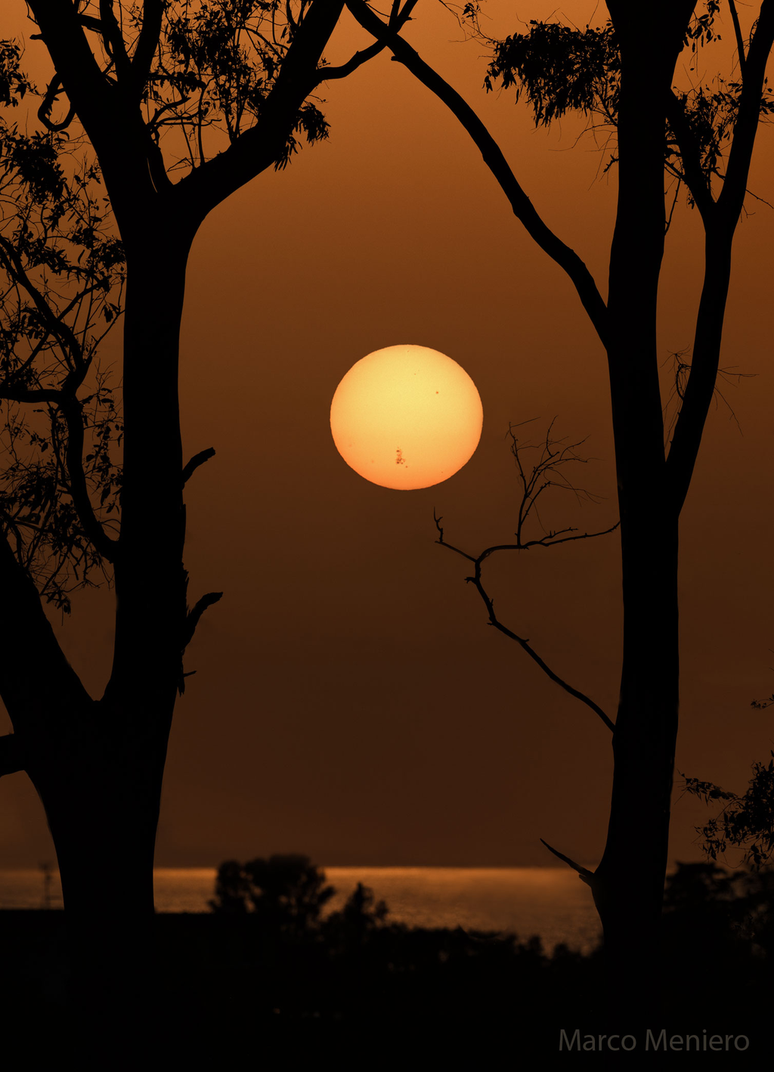Sunspot AR 3664 is 15 times larger than Earth. You can find this giant in the photo highlighted by NASA this Monday (13)
The active region AR 3664 is in the photo highlighted by NASA this Monday (13th) in a shot taken by Marco Meniero in Rome, Italy. To the Sunspots there they are large enough to be seen on the surface of the Sun without needing instruments to magnify their image.
- See photos of the Northern Lights after an extreme solar storm
- Perhaps the Sun is already at maximum activity. What does it mean?
It may seem like the spots aren’t that big, but don’t let that fool you; in fact, patches of AR 3664 are 15 times larger than Earth. You can see it with adequate eye protection, such as observation glasses solar eclipses.
In addition to being large, the AR 3664 is very active. It was there that one of the most energetic areas seen on the Sun in recent years appeared. Over the weekend, the region released a sequence of explosions that launched a series of energetic particles towards our planet.
When they got here, the particles generated northern Lights in unusual places. Now, the smudge region is moving away from Earth, but it may stick around long enough to release more particles in our direction.
An interesting tidbit is that AR 3664’s sunspot is almost the same size as the one that caused the sunspot. Carrington Eventone of the strongest solar storms in history.
Extreme solar storm
Our planet has just experienced the strongest geomagnetic storm in 21 years. The event began on Friday (10th) and continued until the early hours of Monday (13th) after solar flares and at least five coronal mass ejections reached the Earth’s surface. Earth’s magnetic field.
They all came from the active region AR 3664 and most of them were X-class, a category that includes the most powerful type of solar flares. The impact of coronal mass ejections temporarily affected Earth’s magnetic field, allowing particles from the Sun to pass through the atmosphere and interact with gaseous molecules. Here’s what they looked like auroras in Europe and even in Argentina.
The event was classified as G5, a category that includes solar storms considered extreme. In addition to the auroras, the storm caused problems with satellites and affected the operation of equipment in the United States and Canada.
Source: APOD
Trends on Canaltech:
- Unrivaled by Google, OpenAI announces GPT-4o and ChatGPT for PC
- 7 Classic Cartoons That Are Worse Than We Remembered
- What are the dangers of a solar storm?
- The 20 best horror films of the new generation
- Samsung Jet 65 Pet Review | Powerful and portable upright vacuum cleaner
- GPT-4o | OpenAI launches a new, free and more powerful model
Source: Terra
Rose James is a Gossipify movie and series reviewer known for her in-depth analysis and unique perspective on the latest releases. With a background in film studies, she provides engaging and informative reviews, and keeps readers up to date with industry trends and emerging talents.






